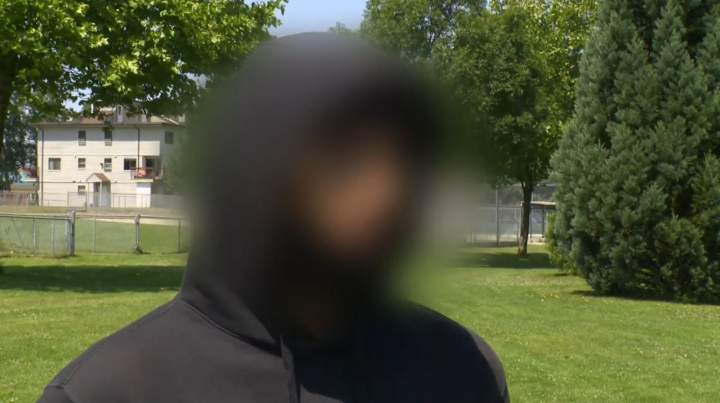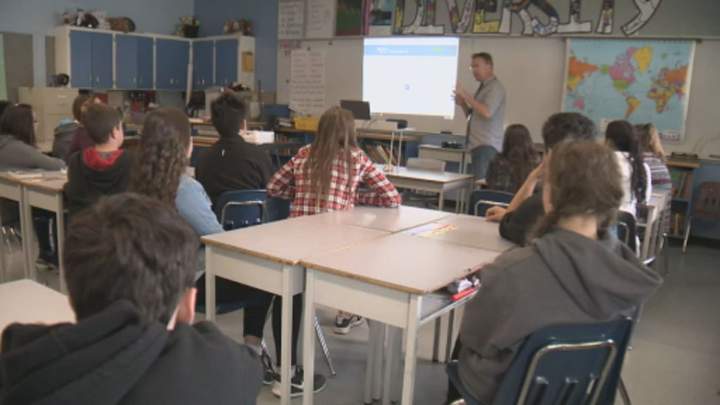
By
Darrian Matassa-Fung
Global News
Published August 9, 2023
6 min read

This article is part of a Global BC series focused on the B.C. gang conflict.
Shootings in broad daylight, vehicles burned beyond recognition, and homes peppered with bullets. All have been common occurrences across B.C.’s South Coast over the past few years.
Police and media have consistently referenced an ongoing “Lower Mainland Gang Conflict,” attributing dozens of shootings and killings to this war. But more recently, it has been renamed “B.C.’s gang conflict” as police say it is not limited to the Lower Mainland and reaches into nearly every municipality in the province.
Ex-B.C. gangster Stanley Price, formerly a high-ranking member of the Redd Alert gang, shared his experiences as an organized gang member, as he was a gun and drug trafficker between 2001 and 2016.
Price said “his office” was a bus stop near East Hastings and Main streets near Carnegie Community Centre.
“I was easily making $5,000 a day for an eight-hour shift, sometimes up to $10,000,” he said.
“We were the muscle. We were based on fear and intimidation.”
Price said at first he viewed the drug trade as a means to make large sums of money extremely quickly — an easy hook for a young man who was influenced by money, power and status.
“I used it for a profit and with all the money came the power. I was hanging out with tough, intimating guys,” he said.
“The glorification of the money, power and another huge reason was acceptance.
“I spent most of my life looking for acceptance.”
Money, power, influence are not only drawing people in the open air drug trade, but it is also the driving force behind brazen daylight violence.
Violence that is extremely concerning for the police and anti-gang officials.
B.C.’s leading anti-gang task force, the Combined Forces Special Enforcement Unit of B.C., said the organized criminal landscape has radically changed over the past decade.
The changes have led to the violent emergence of “subgroups.”
Subgroups are typically younger and more novice criminals who work at the street level dealing drugs, running guns and committing low-level crimes, according to the task force.
These subgroups have caught the attention of police as they are often described as the foot soldiers who do the dirty work for much larger gangs, which operate behind the scenes.
According to police, these groups of young criminals are largely responsible for much of the brazen public violence.
Price, who has more than a decade of experience of dealing with subgroups, said subgroups have always been around but the most recent gang violence wave is concerning.
According to Price, subgroup violence can be started over “anything.”
“Gang members are hot-tempered — I used to be one of them. From disrespecting someone in public to ‘You’re selling drugs on my street.’ Could be over a female, could be a couple of younger family members beefing in school … could be anything,” Price said.
“There is always going to be an up-and-coming crew of kids that are going to put a name on themselves … There are always crews competing.”
Changes to the landscape and perception of B.C. gangsters are apparent as well.
Long gone are the days of highly prolific and publicized gang members such as Bindy Johal and the Dosanjh brothers — Ron and Jimmy — or the 1990s Punjabi Mafia, and the Red Scorpion’s Bacon Brothers, who were at war with the United Nations and members like Conor D’Monte.
Gangsters these days operate and flex within their bubbles, isolated from the public sphere and, more importantly, the police. They have adopted a military-like structure similar to a pyramid-style hierarchy, officials say.
“At the top of the pyramid, you have the long-established, high-level groups. These are the groups that are brokering the importation of cocaine and fentanyl,” Staff Sgt. Lindsey Houghton said, with B.C.’s anti-gang task force.
“(The high-level groups such as the Hell’s Angels) are essentially the puppet masters. The goal of the groups at the top is to insulate themselves, not take any damage, and not get involved in the fighting.”
According to the gang task force, the ongoing war has evolved into three major pillars of gangs and allegiances — the Wolfpack and Brothers Keepers, the United Nations, and the Red Scorpions.
These three gangs are active in every major municipality in the Lower Mainland and also operate outside the province including internationally, Houghton said.
Each major group has numerous subgroups that work underneath them, which police refer to as “street-level soldiers.”
“Now the major gangs are behind the scenes more, and are happy to let the subgroups — who are selling the drugs, dial-a-doping, carrying guns and are in the cars — they’re happy that those are the ones exposed to the violence because they are replaceable,” Houghton said.
Sometimes the subgroups are left in the dark about who they are actually selling drugs and guns for.
“Subgroups are affiliated through degrees of separation; sometimes they don’t even know they are dealing with the main groups,” Houghton told Global News.
“Many times when we talk to (subgroup members) or we talk to their parents after they’ve been killed — they may not know they were connected. They think they’re just selling drugs and don’t know where the money is going after they hand it off.
“We often get denial until we connect the dots for them.”
The B.C. anti-gang task force said many of these subgroup members have little regard for public safety and do not follow any “codes” that used to exist decades ago.
A dangerous example, an audacious double shooting on Highway 1 in Burnaby that left 18-year-old Meysam Zaki dead. The shooting took place in the middle of a busy summer day at 2:30 p.m. on Aug. 7, 2022.
A short time after the double shooting, a black Mercedes Benz SUV was found engulfed in flames in the Brentwood neighbourhood of Burnaby.
Burned-out getaway vehicles are part of a common pattern that is a typical sign of a gang shooting, police said.
Gun violence is at the centre of police and public concerns as “targeted” shootings occur almost every other week and often take places where there are civilian bystanders.
Both police and previous gang members said access to guns has never been easier.
“Guns now are both sourced internationally and domestically. If a gang member wants to attain a firearm, they will get it,” Houghton said.
“Whether it’s a Glock pistol or AR-15 style rifle … these guns are being smuggled in from the United States. They are being stolen from individuals who legally possess them, or they are being obtained by straw purchasers, who will often report these guns stolen or will sell to an individual.”
Shane Knox, a former United Nations gang member in the mid-2000s, who also sold large quantities of drugs in the Downtown Eastside, confirmed that the vast majority of guns are making their way here over the border.
“All these guns are being smuggled in,” Knox told Global News.
“A lot of these firearms you see being used in these shootings … there is no wall at the border.
“It’s pretty easy to get a firearm from the States. … A Glock, for example, is around $300 in the States and if you bring that here you can flip it for around $2,000.”
Just like any industry in 2023, the implementation of technology and adaptation has changed organized criminal activities forever. Global News talked to more gang, cryptocurrency, and psychology experts on the vast topic of the B.C. gang conflict.
The next story in this series delves into the underside of drug crimes, and how technology and the evolution of cryptocurrency is hampering police investigations









Comments